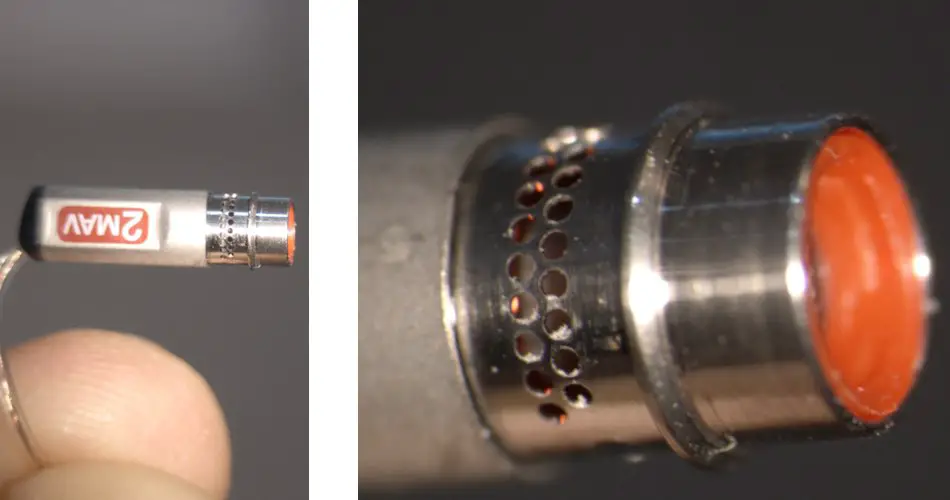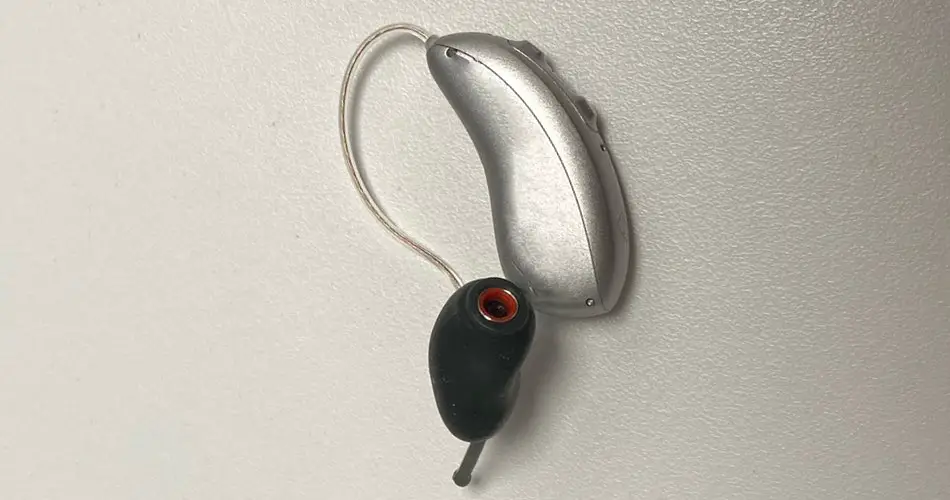Phonak hearing aids of course have their special features. In this article, we would like to take a closer look at the Active vent receiver from Phonak, which is currently unique in hearing aids. This Active vent ensures that in the case of loud noise a small valve inside the receiver closes and noise can no longer enter directly into the ear canal. Then the hearing aid has the ability to block the noise better and let you focus on speech more easily.
The great advantage of this is that it filters out noise more efficiently and makes it easier for you to concentrate on speech when you are in a noisy envirnment. However, a closed valve often brings the disadvantage that your own voice is louder.
This effect is known as occlusion effect and many hearing aid users find it uncomfortable. For this reason, the Phonak hearing aid responds by opening the Active vent in quiet environments. This gives you the most natural perception of your own voice.
With Which Phonak Hearing Aids Is the Active Vent Available?
The Active Vent is available with the Paradise hearing aids. However, only the version with the rechargeable battery can be combined with the active vent. The Active Vent itself is built directly into the receiver (speaker), which is placed directly in your ear canal. The higher the hearing loss, the more powerful and larger the receiver needs to be.
While Phonak’s conventional receivers are available in different sizes of S, M and P, the Active Vent is only available in power level M. It is very good at compensating for weak and moderate hearing losses.
How Does the Function of the Active Vent Differ in the Tech Levels P90, P70, P50 and P30?
Phonak hearing aids are divided into different technology levels. P90 stands for the full version with the most powerful software, with the highest price while P30 is the most affordable version. The Active Vent in combination with the P90 version reacts the way you want it to. By that I mean it reacts fully automatically. As soon as it gets loud or you switch to the streaming program, the vent closes.
With all other “cheaper” Pradise variants, the Active vent is not equipped with an automatic function. You must then switch to the program in which we acousticians have stored the activation of the vent within the app or by pressing the buttons of the Phonak Paradise devices for a longer time. So this should be discussed with the customer in any case.
Personally, it would bother me if the hearing aid did not react automatically. Especially if you often change between louder and quieter sounds.
Phonak does not specify the volume or the ratio of noise to speech at which the Active Vent closes.

What should also be discussed is the increased cost that comes with choosing the Active Vent. Ideally, the earpiece (speaker) in your ear will last you five to six years. The Active Vent, on the other hand, needs to be replaced about every six months. This produces a cost of 85$ per ear per six months.
The six months is an average value that applies to the mechanics. In individual cases, however, the period could be shorter if, for example, a lot of earwax is produced or the ear canals are more humid.
We have already equipped some customers with the Active Vent, with good results and experiences. The recommendation here is to fit very closed. This means that the thicker silicone plug or the titanium earmold should fit very tightly and close the ear canal.
For regular cleaning of Phonak’s Active Vent earpieces, an HF 3 cerumen filter is required. Where regular can mean every two weeks for some wearers and every four months for others. If you do not want the titanium earmold, Phonak also offers standard silicone earplugs, which differ significantly from the shape of conventional earplugs and are much less flexible. Whereas the conventional plugs are almost foil-like, the silicone domes have a clear dimensional stability.
If the thick silicone dome does not fit in your ear, it may be worthwhile to have a titanium earmold made. At its thickest point, the silicone dome has a thickness of about 1.7 mm. A titanium earmold, on the other hand, has wall thicknesses of about 0.4 mm and is therefore more suitable for smaller ears.

Alternatives to Phonak’s Active Vent to Avoid the Occlusion Effect
If you have other hearing aids or the Phonak M receiver is not suitable due to the power or size, then the occlusion can also be reduced with the shape of the earmold. This works because the occlusion (occlusion effect, louder voice) is caused by the support of the silicone plug or the earmold in the ear canal.
This is because the lower jaw is located near the ear canal. When you speak, it vibrates and transmits these vibrations into the ear canal.
Deeper in the ear canal, it becomes bon,ier and once there, the voice sounds natural. Further to the outer part of the ear canal, a milling must then be placed at the level of the lower jaw, which reduces the contact of the earmold at the level of the lower jaw.
However, this is not possible for every ear canal. It depends on the shape and on the size of your ear canal in combination with the required earpiece.
The myPhonak app
The Phonak hearing aids app is called myphonak and is one of the apps with the most versatile features.
They have an equalizer that allows you to adjust the sound pattern to your needs in any situation. This does not work with other hearing aids.
In addition, you can intervene very nicely in the different functions and, for example, select the direction where the microphones should provide better understanding. Better said how big the angle for this should be in front of you. Especially in a situation with a lot of noise, this can be an advantage.
If you want to switch to another program with the app to activate the Active Vent, this is certainly a very discreet and quick way to do so.
